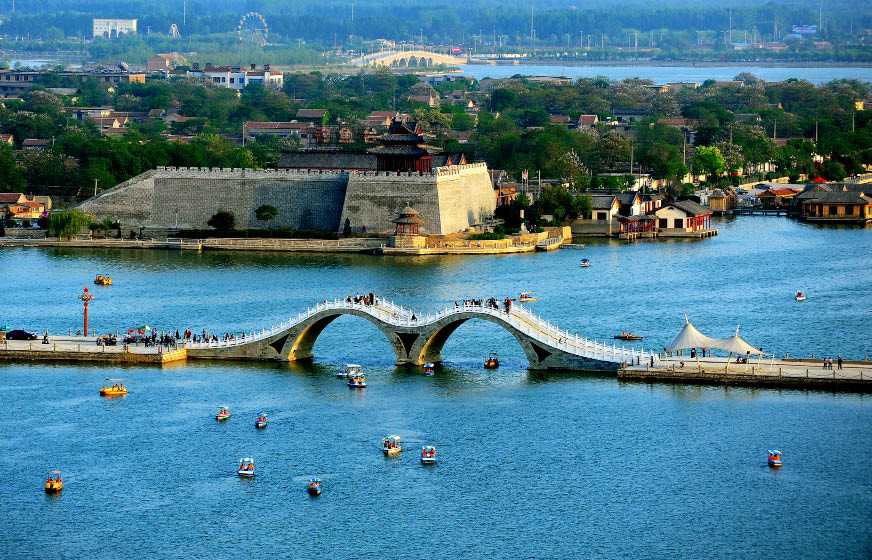Water, Heroes and Donkeys
The Unlikely History of Liaocheng City
By WU MEILING
Liaocheng, on the dry, windswept landscape of the North China Plain, is an oasis of water. The city is in Shandong Province, famous for the glitzy seaside city of Qingdao. But subtler treats await inland.
Liaocheng is in Shandong’s far west, where its neighbors are Hebei and Henan provinces. The Grand Canal – the world’s longest artificial waterway built in the 6th century – bifurcates the city. The Yellow River flows through its northeast corner, while the Majia and Tuhai rivers wind their way past downtown. The old town of Liaocheng is in fact completely surrounded by a lake, Dongchang, which in the past served as a super-sized moat.

Waterworld
Water accounts for a third of Liao-cheng’s 8,715-square-kilometer area. Of its rivers, 23 have a drainage area of more than 30 square km, and three of more than 100 square kilometers. Dongchang covers an area of 6.3 square kilometers, making it the largest city lake in North China. All of these water bodies act as a giant humidifier. Visitors to Liaocheng often remark that they feel they could be in humid South China.
Water has greatly influenced the development of the city. During the Yuan (1271 - 1368) and Qing (1644 - 1911) dynasties, the Grand Canal, shipping artery between northern and southern provinces, injected vigor into Liaocheng’s economy and made it a key trade city. “The market is busy, the smoke is dense; there are no less than 100,000 households in the city,” commented Marco Polo in his famous travelogue 600 years ago. “There are many walled towns and villages along the canal. Ships come and go, transporting silk, spices and many other commodities.”
Liaocheng may have reminded Marco Polo of Venice, although it is in fact much older than its Western counterpart. The city was established 2,500 years ago, and evidence of the region’s earliest habitants can be traced back 6,000 or more years. Nine excavated historical sites located in and around the city reveal the presence of an ancient three-tiered pyramidal social structure. Some of the earliest statesmen of Chinese civilization made documented trips to Liaocheng, including Emperor Yan, the Yellow Emperor, and Cang Jie, Shun and Yu. Some are buried here.
Services
Economy
- Eco-agriculture and Eco-tourism Power Nanchang’s Green Development
- Balance Environmental Protection and Economic Prosperity – Nanchang Looks to European Technology for Green Development
- Sustainable Growth Requires Wiser Energy Use
- Chinese Economy: On the Path of Scientific Development
- China's Economy over the Last Ten Years

